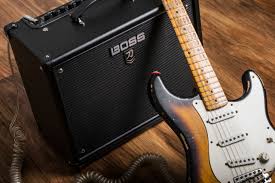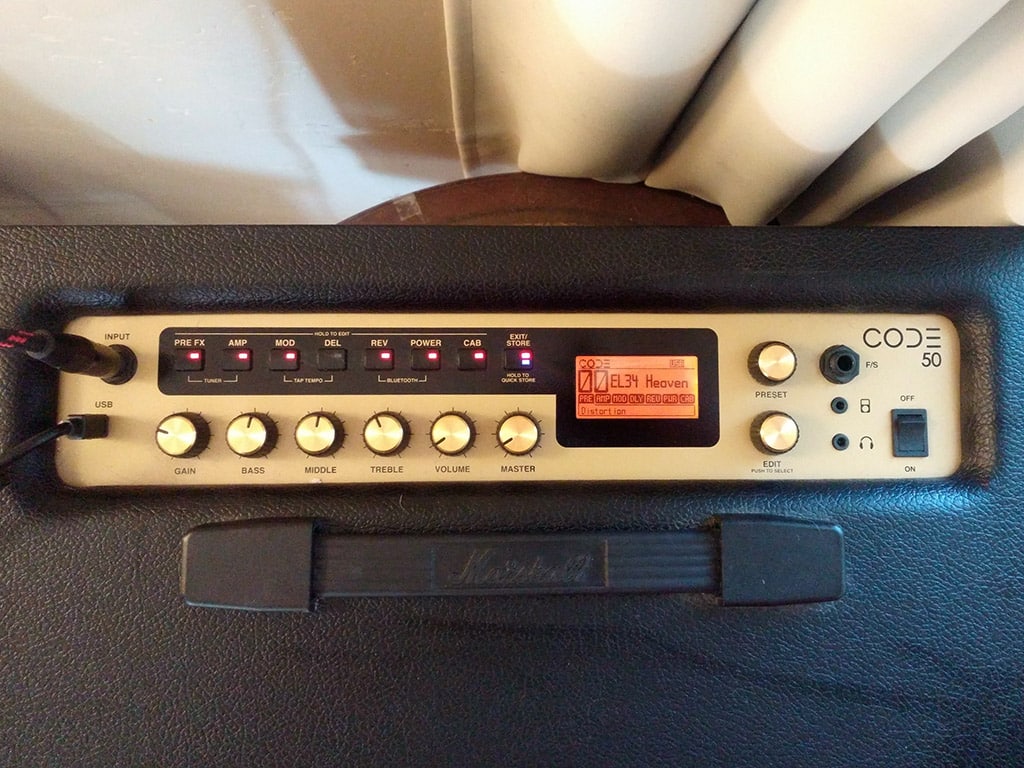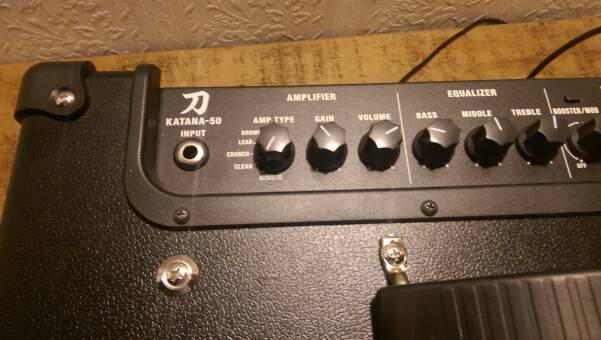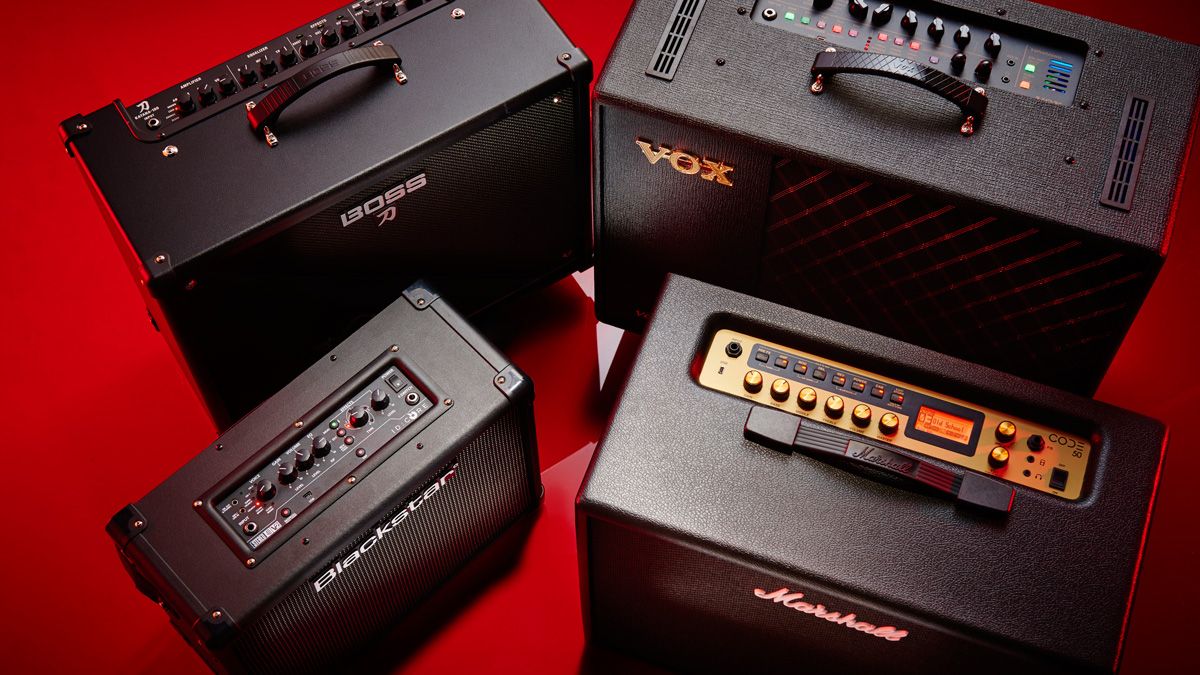Contents
As music enthusiasts compare amps, Marshall Code 50 vs Boss Katana 50 is something that comes up every now and then. While both amps give a good account of themselves for most of the time, different guitarists think differently about the winner. This article is going to show you everything that you must keep in mind about Marshall Code 50 and Boss Katana 50 so you could make the right call on your own.
Marshall Code 50 Overview
If you play at home, in the garage, or if you play on gigs, it’s important to have a powerful amp for every rig. Marshall Code 50 is a very reliable amp that takes on any situation – allowing you to make creative moments wherever possible.
Enjoy over 100 editable user presets which enable you to explore your capacity as an artist. It has a powerful 12-inch speaker to help you create the sound you want to produce. The Marshall Gateway software allows you to control your amp on your mobile via USB or Bluetooth connection. You can take advantage of the AUX input to connect headphones as you practice without disturbing your neighbors.
Boss Katana 50 Overview
Katana is a sword carried by a historic samurai in Japan, which signifies honor, precision, and artistry in the country. All these characteristics are being embodied by the Boss Katana 50. This amp delivers a wide range of tones, a huge collection of customizable effects, powerful Tone Setting memories, and many more.

Like the Marshall Code 50, the Katana 50 is also a 50-watt combo amp featuring a 12-inch speaker. One distinct feature that makes this amp versatile is its five distinct amp characters – Clean, Crunch, Lead, Brown, and Acoustic. Brown is derived from the Boss Waza amp which is ideal for rock sound during the rock era. Acoustic, on the other hand, is designed for acoustic-electric guitars.
Specifications Comparison
From just the overview of these two great amps, it’s very clear that they are great in unique ways. Only the guitarist can determine which one is great for him according to his music preferences and styles.
With that being said, it’s very important to bring this comparison to the next level. Here’s a detailed comparison between the specs of these great modeling guitar amplifier combos.
| MARSHALL CODE 50 | BOSS KATANA 50 | |
| Type | Solid State with digital modeling | Solid State |
| No. of Channels | 1 | 5 x Amp Types |
| Total Power | 50W | 50W (25W, 0.5W settings) |
| Speaker Size | 1 x 12″ | 1 x 12″ |
| Reverb | Yes | Yes |
| Built-in Effects | Auto-Wah, Chorus, Delay, Digital Reverb, Distortion/Overdrive, Echo, Flanger, Phaser, Spring Reverb, Tremolo | Delay, Digital Reverb, Distortion/Overdrive |
| EQ | 3-band EQ | 3-band EQ, Tone control |
| Inputs | 1 x 1/4″ (instrument), 1 x 1/8″ (aux in), Bluetooth | 1 x 1/4″ (instrument), 1 x 1/4″ (power amp), 1 x 1/8″ (aux in) |
| Outputs | 1 x USB Mono Interface; 1 x 1/8″ Stereo DI |
1 x 1/4″ Stereo Headphone 1 x USB Stereo Interface |
| Footswitch I/O | 1 x 1/4″ (preset scrolling), footswitch not included | 1 x 1/4″, not included FS-6 sold separately |
| Tone Section | Bass, Gain, Mid, Preamp Volume, Treble | Channel 1: Bass, Channel Volume, Gain, Mid, Treble |
| Connectivity | USB, Bluetooth (iOS/Android control via Gateway App) | USB Type B |
There we can find a few differentiating factors of these two amps. But specs comparison is one thing, we need to know about the performance, sound quality, and the price. Let’s get to it.
Performance
Let’s start with the Marshall 50. Small, yet the controls are limited and are arranged in a very simple manner. Knobs are just a few because it has endless menus through its associated downloadable mobile app. Marshall 50 is Bluetooth-ready – easier to manipulate the settings rather than fidgeting all buttons and controls altogether.

Boss Katana, on the other hand, has a dozen more knobs. No Bluetooth connectivity, but the controls can be easily adjusted. Changing the effects on the fly is quite easy and straightforward. What seals the deal is the Tone Studio Editor which allows you to do a lot more than you could ever imagine. You can also find the Amp Type Selector which offers four modes that sound natural and clean.
Sound
Presets are unexpectedly good – everything is pretty much interesting. Holds the bottom quite beautifully. Though it’s a tiny amp, it’s like all the sounds of this cab come from the vintage Marshall 1960. One caveat though, since it’s smaller, it has an optimal position – it can’t fill the entire room.
The Boss Katana 50, on the other hand, is kind of loud. In the acoustic department, Katana’s acoustic sim is way better than Code 50. For some players, Katana has better cleans, while the Marshall 50 is great for distortions.
Here’s a very comprehensive video comparison between the two in terms of sound.
Price
You can find that Code 50 is more expensive than Katana 50. Given that it’s loaded with tons of features, plus the endless possibilities with Bluetooth connection, you won’t be surprised why it has a much more expensive price tag.
Conclusion
You have now reached the end of the comparison between Marshall Code 50 vs Boss Katana 50. Each amp is a powerhouse of their own – they serve musicians greatly in a unique way.
The Code 50 gives you endless possibilities with its advanced connectivity option (Bluetooth-enabled), as well as the mobile app that allows you to do all the manipulations easily. The Katana 50, on the other hand, is simple, easy to adjust, and really gives you the features unheard-of in other amps. If you’re the kind of player who runs effects on your amp, this is what you need.

Now, it’s up to you, your preferences prevail. Choose the one that fits your budget and the one that makes you practice harder.

Hi music fan! I am Jeff. Hope that you enjoy some stuff I shared here in my personal blog.
About myself, Currently I am in charging as Artist Manager/Music Supervisor at 72 Music Management. I did managed album to Grammy Award in 2017 with 7 Nominations from 2014-2020 and had the opportunities to work with : A.J. Croce, Blind Boys of Alabama, Bobby Rush, Dom Flemons, Dustbowl Revival, Sarah Grace
Governor of the Memphis Chapter of The Recording Academy is one of a award that I am lucky to achieved.
